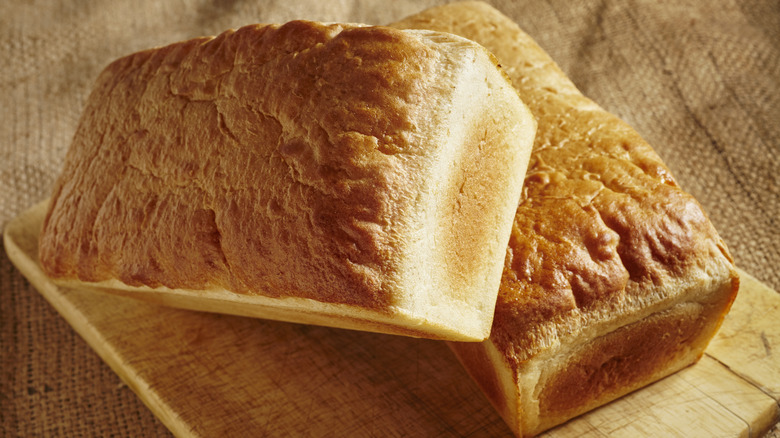The Salty Bread That Fended Off Food Poisoning For American Pioneers
Long before gold miners in San Francisco made sourdough bread, there was another unique bread with intense flavors championed by American pioneers. Appalachian cuisine can be quite distinctive, though it can mean very different things in this broad swath of land that stretches from the American South through the Midwest and into the Northeast, touching over a dozen states, according to The Manual. Furthermore, its heritage includes many cultures from Native American, European, and African, as explained by the Blue Ridge Mountains Travel Guide.
So, what can you find among Appalachia's diverse food options? The Manual describes the classic and rustic nature of the area's meals, as well as their simplicity. Preservation methods like canning, salting, and smoking are common practices there. Wheat was historically not as available there as elsewhere, so corn became the prominent grain. The inland region relied on freshwater fish and game meat for its protein, while produce, such as bush or pole beans, supplemented diets. The Blue Ridge Mountains Travel Guide also lists apples, black-eyed peas, grits, okra, peanuts, red pepper, squash, and watermelon as other common region-specific ingredients. Its dishes include country ham with red eye gravy, pawpaw and cushaw vinegar pie, and skillet cornbread. The common theme within all of this appears to be resourcefulness, and that approach once extended to bread, too.
Salt-rising bread
When American pioneers gradually spread westward into the Appalachian Mountains, they had to make do with whatever they had. Instead of working to maintain a bread starter, they relied on salt-rising bread, per Atlas Obscura. This didn't require yeast. It didn't even need salt, as its name would suggest, but rather bacteria. Settlers cultivated microbes with cornmeal or potatoes and leavened bread with the hydrogen the bacteria produced. That bacteria, Clostridium perfringens, has strains that cause diarrhea and gangrene. Thankfully, baking this bread kills the bacteria, fending off food poisoning, which could be a death sentence in those days. The end result is a dense, but tender loaf that smells of cultured cheese.
If salt isn't necessary, why did Appalachians call it salt-rising bread? According to the Bitter Southerner, the unique bread's temporary storage containers may have been salt barrels heated by sun or fire. Or maybe, the salt is just a reference to the baking soda frequently added. Regardless, the bread was worth it to people for its sweet, savory, and slightly sour flavor, and it only took a day or so to prepare. This recipe dates back to 1778 West Virginia, and at one point the starter was commercially produced, though its popularity has certainly faded over the centuries. This is likely because it can be rather finicky to work with, demanding close attention and requiring high heat for long periods of time. Still, who knows what the innovative future may hold for this Appalachian creation of old?

